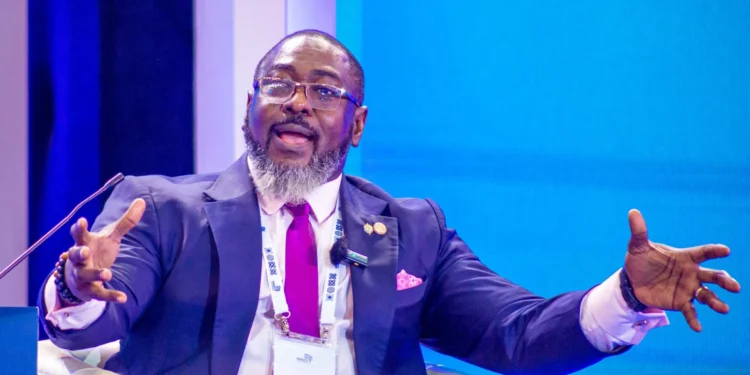The Chief Executive Officer of the Nigerian Economic Summit Group (NESG), Dr. Tayo Aduloju, says recent tariff relief measures by the Federal Government have triggered over $2 billion worth of digital infrastructure imports into Nigeria.
Dr. Aduloju made the disclosure as the keynote speaker during the 2025 Biennial Lecture in Honour of Alhaji Tijjani M. Borodo, President and Chairman of the Governing Council of the Chartered Institute of Directors Nigeria (CIDN).
The event, themed “Building Digital Resilience: Governance, Risk and Compliance,” brought together leaders from the public and private sectors to address Nigeria’s digital vulnerabilities.
He said the 50% tariff headroom granted by the government has unlocked long-stalled investments in telecom equipment and other digital capabilities, marking a turning point in Nigeria’s digital economy.
“As you may know, the government recently provided a 50% tariff headroom for telecom operators,” Aduloju said
“That alone has triggered $2 billion worth of importation of equipment and digital infrastructure capabilities that went on board this year. It will raise the digital infrastructure capacity of the country,” Aduloju said.
He explained that for years, restrictive tariffs had discouraged large-scale investments needed to scale infrastructure in the telecom sector. But with the policy shift, operators are now responding with renewed confidence.
Digital infrastructure is up, but resilience remains weak
Despite the significant inflow, Aduloju warned that Nigeria still lags in critical areas of cybersecurity resilience and coordination between stakeholders.
He cited data showing that 58% of government institutions globally, including in Nigeria, are under constant cyberattacks, and described the government’s response as sluggish.
“Public sector utilities are dragging their feet. Even though we’ve been talking about smart grid energy systems for 25 years, we are still struggling with adoption,” he said.
Aduloju said Nigeria had developed strong policies for digital governance on paper but continued to fall short in execution due to limited technical capacity, poor inter-agency cooperation, and implementation gaps in cybercrime laws.
“We have the laws, but the challenge is in implementation. There are still regulatory and corruption risks undermining enforcement,” he said.
He urged the National Assembly to accelerate the passage of e-governance legislation, which he said would digitize government operations and strengthen national resilience.
He also advised corporate boards to conduct regular cybersecurity audits, strengthen internal controls, and avoid creating tech silos across departments an issue he said was responsible for 40% of system failures in African organisations.
“All it takes is two unmanaged laptops to compromise an entire enterprise system,” he warned.
What you should know
On January 20, 2025, the Nigerian Communications Commission (NCC) approved a historic 50% tariff adjustment for telecom services, marking the first increase since 2013, citing mounting operational costs and the need to sustain industry viability
- Unlike earlier battles for a 100% hike, the regulator took a moderate, balanced approach, granting operators headroom to raise rates while still protecting consumers. The Association of Telecommunication Companies of Nigeria (ATCON) welcomed the move, urging swift implementation
- Telecom giants didn’t waste time. By early February, MTN and Airtel had begun importing new equipment and pledging service upgrades, aiming to deliver noticeable improvements within three months
- Despite the sector-wide optimism, consumer backlash surfaced fast. The National Association of Telecommunications Subscribers (NATCOMS) threatened legal action, criticizing the tariff hike as a breach, and the Nigeria Labour Congress (NLC) even planned nationwide protests on February 4, calling it insensitive to already burdened households
Amid the controversy, data usage skyrocketed demand proved inelastic. In March 2025, Nigerians consumed nearly 996 petabytes of mobile data, a surge of 11.5 % from February, and subscriptions grew to 141.5 million active lines, pushing teledensity close to 80%











